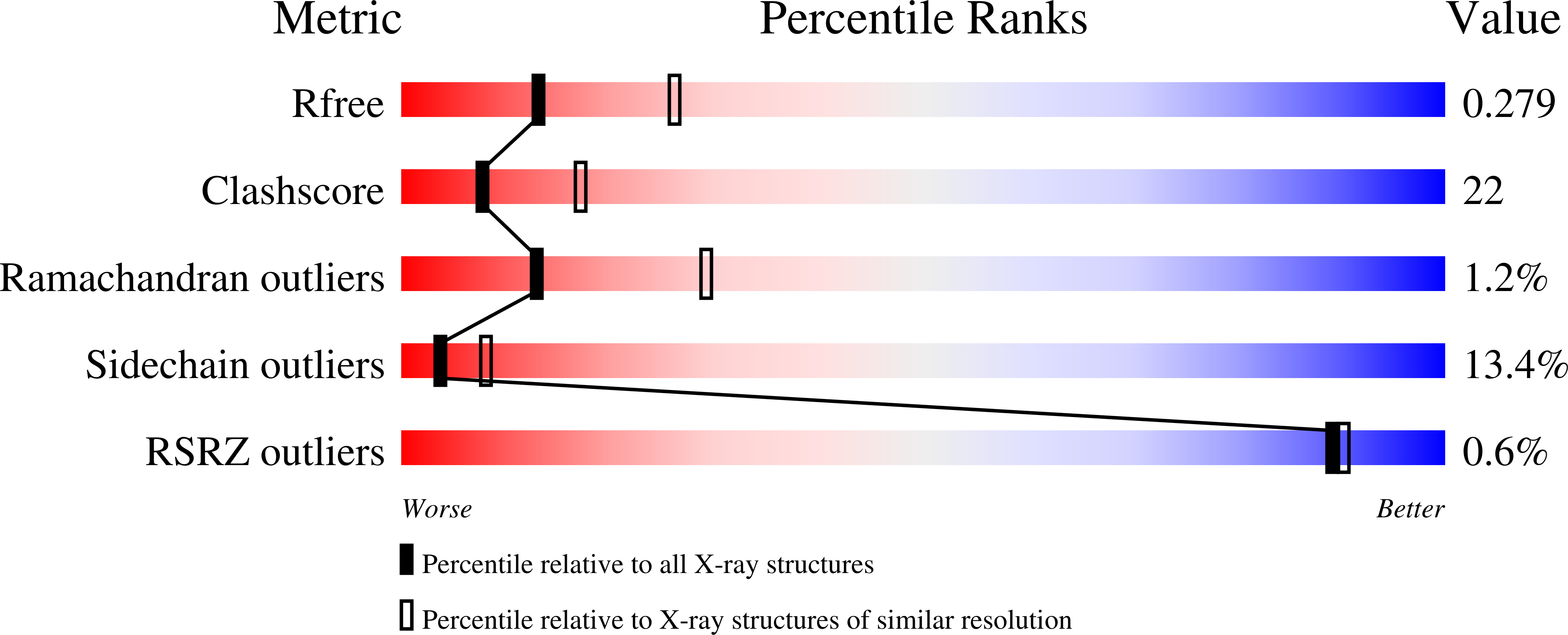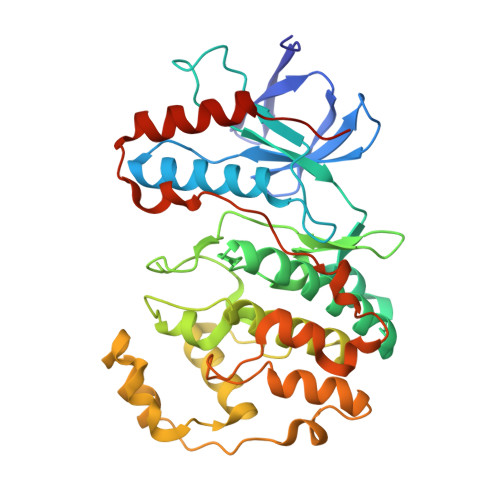Active mutants of the TCR-mediated p38alpha alternative activation site show changes in the phosphorylation lip and DEF site formation.
Tzarum, N., Diskin, R., Engelberg, D., Livnah, O.(2011) J Mol Biol 405: 1154-1169
- PubMed: 21146537
- DOI: https://doi.org/10.1016/j.jmb.2010.11.023
- Primary Citation of Related Structures:
3OD6, 3ODY, 3ODZ, 3OEF - PubMed Abstract:
The p38α mitogen-activated protein kinase is commonly activated by dual (Thr and Tyr) phosphorylation catalyzed by mitogen-activated protein kinase kinases. However, in T-cells, upon stimulation of the T-cell receptor, p38α is activated via an alternative pathway, involving its phosphorylation by zeta-chain-associated protein kinase 70 on Tyr323, distal from the phosphorylation lip. Tyr323-phosphorylated p38α is autoactivated, resulting in monophosphorylation of Thr180. The conformational changes induced by pTyr323 mediating autoactivation are not known. The lack of pTyr323 p38α for structural studies promoted the search for Tyr323 mutations that may functionally emulate its effect when phosphorylated. Via a comprehensive mutagenesis of Tyr323, we identified mutations that rendered the kinase intrinsically active and others that displayed no activity. Crystallographic studies of selected active (p38α(Y323Q), p38α(Y323T), and p38α(Y323R)) and inactive (p38α(Y323F)) mutants revealed that substantial changes in interlobe orientation, extended conformation of the activation loop, and formation of substrate docking DEF site (docking site for extracellular signal-regulated kinase FXF) interaction pocket are associated with p38α activation.
Organizational Affiliation:
Department of Biological Chemistry, Alexander Silberman Institute of Life Sciences, Hebrew University of Jerusalem, Jerusalem 91904, Israel.















